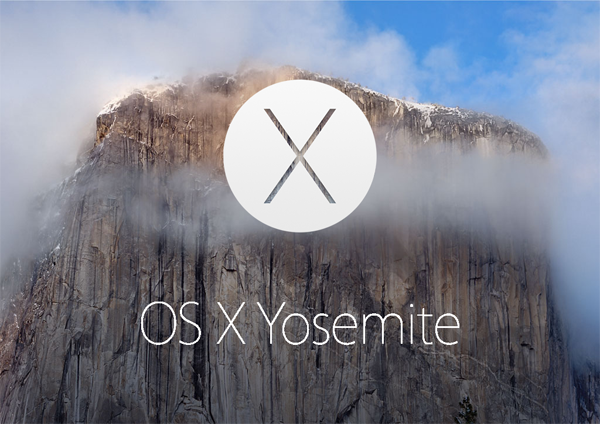Download Jdk 1.6 For Mac Os X
1.6 Test it, by default, Mac takes the highest version. $ java -version openjdk version '11.0.6' 2020-01-14 OpenJDK Runtime Environment AdoptOpenJDK (build 11.0.6+10) OpenJDK 64-Bit Server VM AdoptOpenJDK (build 11.0.6+10, mixed mode). The java-1.6.0-openjdk package contains just the Java Runtime Environment. If you want to develop Java programs then install the java-1.6.0-openjdk-devel package. For a list of pointers to packages of the BSD Port for DragonFly BSD, FreeBSD, Mac OS X, NetBSD and OpenBSD, please see the BSD porting Project's wiki page.
Download Java 1.6 Mac Os X
This article shows you how to install Java on Mac OSX, and also how to do Java/JDK version switching.
Tested with
- Mac OS 10.15.3
- JDK 8, 9, 10, 11, 12, 13 (AdoptOpenJDK)
Note
On Mac OSX, Java should installed in this folder; it is Mac’s standard.
We will show you two ways to install Java JDK on Mac, via the popular Homebrew package manager and manually installation.

1. Homebrew
1.1 Install Homebrew and update it. /bootstrap-studio-4-free-download-for-mac.html.
1.2 Add adoptopenjdk/openjdk.
1.3 Find all available JDK.
The output may vary.
1.4 Java 8, 9, 10, 11, 12, 13, choose one to install.
This example will install Java 8 and 11 for testing.
1.5 Where Java is installed? /usr/libexec/java_home -V
Homebrew will install the JDK at folder /Library/Java/JavaVirtualMachines/, and this folder is Mac’s standard folder for Java installs.
1.6 Test it, by default, Mac takes the highest version.
1.7 How to do version switching? Refer to below 3. version switching
2. Manual installation
The example shows you how to download the early access JDK 14 and install it on Mac OSX.
Steps
- Download JDK.
- Puts the JDK folder at
/Library/Java/JavaVirtualMachines. - Export
JAVA_HOME.
2.1 Download the early access JDK 14 from the OpenJDK website.
2.2 Extracts tar file to /Library/Java/JavaVirtualMachines
2.3 Export JAVA_HOME.
Find out where is JDK 14.
Create or edit the existing ~/.bash_profile with a text editor.
Export JAVA_HOME, save and exit.
Reflect the changes
2.4 Test it.
3. Version Switching
In this tutorial, we installed the Java 8 and Java 11 via Homebrew (Step 1), and Java 14 manually (Step 2), so this Mac has three versions now. And the Mac is using the JDK 14.
Note
There are tools like jEnv to manage the Java version switching, but I prefer to manage with export JAVA_HOME manually, it’s simple and easy to understand, no black box magic.
3.1 Create or edit the existing ~/.bash_profile with a text editor like vim or nano, export JAVA_HOME to the specified JDK we want to use on Mac.
The above changes will make JAVA_HOME point to JAVA 8.
3.2 Reflect the changes.
Done.
If we want to switch JDK version again, update the ~/.bash_profile and export JAVA_HOME to other JDK version.
References

mkyong
Founder of Mkyong.com, love Java and open source stuff. Follow him on Twitter. If you like my tutorials, consider make a donation to these charities.This article shows you how to install Java on Mac OSX, and also how to do Java/JDK version switching.
Tested with
- Mac OS 10.15.3
- JDK 8, 9, 10, 11, 12, 13 (AdoptOpenJDK)
Note
On Mac OSX, Java should installed in this folder; it is Mac’s standard.
We will show you two ways to install Java JDK on Mac, via the popular Homebrew package manager and manually installation.
1. Homebrew
1.1 Install Homebrew and update it.
1.2 Add adoptopenjdk/openjdk.
1.3 Find all available JDK.
The output may vary.
1.4 Java 8, 9, 10, 11, 12, 13, choose one to install.
This example will install Java 8 and 11 for testing.
1.5 Where Java is installed? /usr/libexec/java_home -V
Homebrew will install the JDK at folder /Library/Java/JavaVirtualMachines/, and this folder is Mac’s standard folder for Java installs.
1.6 Test it, by default, Mac takes the highest version.
1.7 How to do version switching? Refer to below 3. version switching
2. Manual installation
The example shows you how to download the early access JDK 14 and install it on Mac OSX.
Steps
- Download JDK.
- Puts the JDK folder at
/Library/Java/JavaVirtualMachines. - Export
JAVA_HOME.
2.1 Download the early access JDK 14 from the OpenJDK website.
2.2 Extracts tar file to /Library/Java/JavaVirtualMachines
2.3 Export JAVA_HOME.
Find out where is JDK 14.
Create or edit the existing ~/.bash_profile with a text editor.
Download Jdk 1.6 For Mac Os X64
Export JAVA_HOME, save and exit.

Reflect the changes
2.4 Test it.
3. Version Switching
In this tutorial, we installed the Java 8 and Java 11 via Homebrew (Step 1), and Java 14 manually (Step 2), so this Mac has three versions now. And the Mac is using the JDK 14.
Note
There are tools like jEnv to manage the Java version switching, but I prefer to manage with export JAVA_HOME manually, it’s simple and easy to understand, no black box magic.
3.1 Create or edit the existing ~/.bash_profile with a text editor like vim or nano, export JAVA_HOME to the specified JDK we want to use on Mac.
The above changes will make JAVA_HOME point to JAVA 8.
3.2 Reflect the changes.
Done.
Network Distributed Password Recovery: Passware Kit Agent. Passware Kit Agent is a network distributed password recovery worker for Passware Kit Forensic. It runs on Windows (64-bit only), Linux (64-bit only), and Amazon EC2, and has linear performance scalability. Each computer running Passware Kit Agent simultaneously supports multiple CPUs. /passware-kit-forensic-2017-download.html.
If we want to switch JDK version again, update the ~/.bash_profile and export JAVA_HOME to other JDK version.